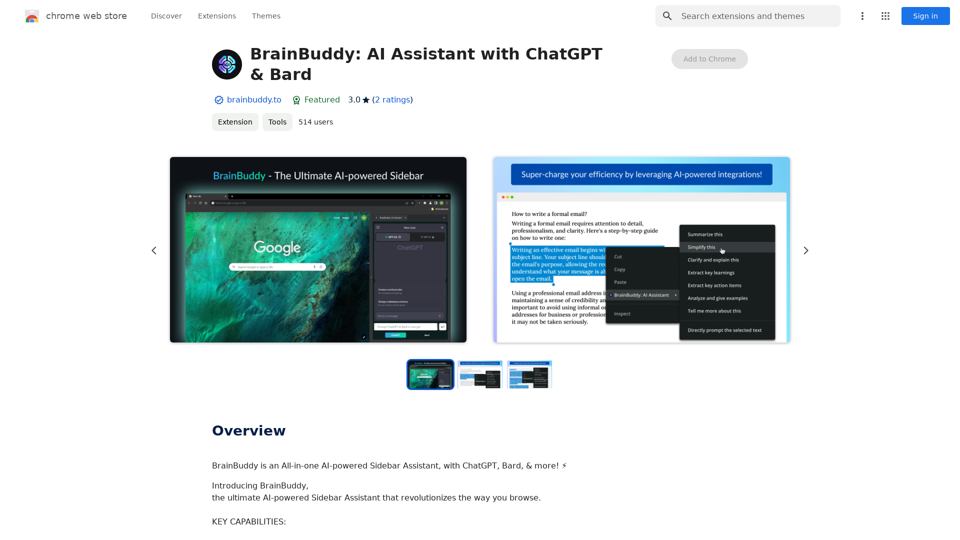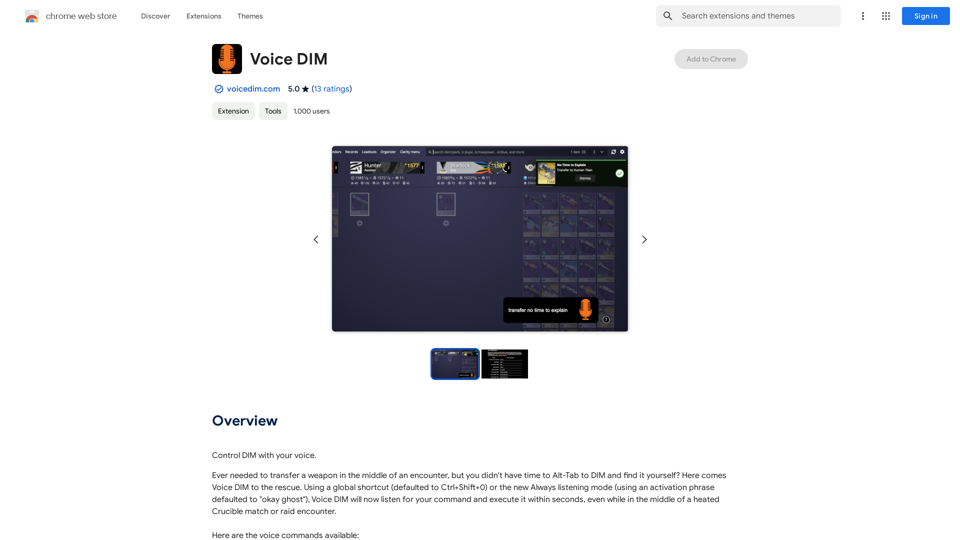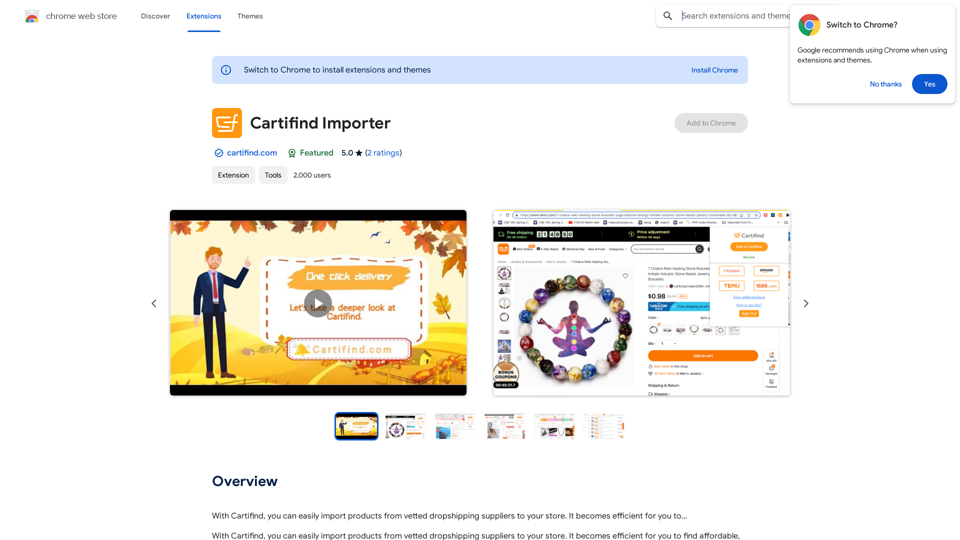Raycast Companion is a browser extension that enhances Raycast AI's capabilities by providing context from your browser. It enables users to summarize websites, analyze content, and automate tasks directly from their browser. The extension integrates seamlessly with Raycast, allowing for custom AI commands using the {browser-tab} dynamic placeholder.
Raycast Companion
A browser extension to provide more context to Raycast
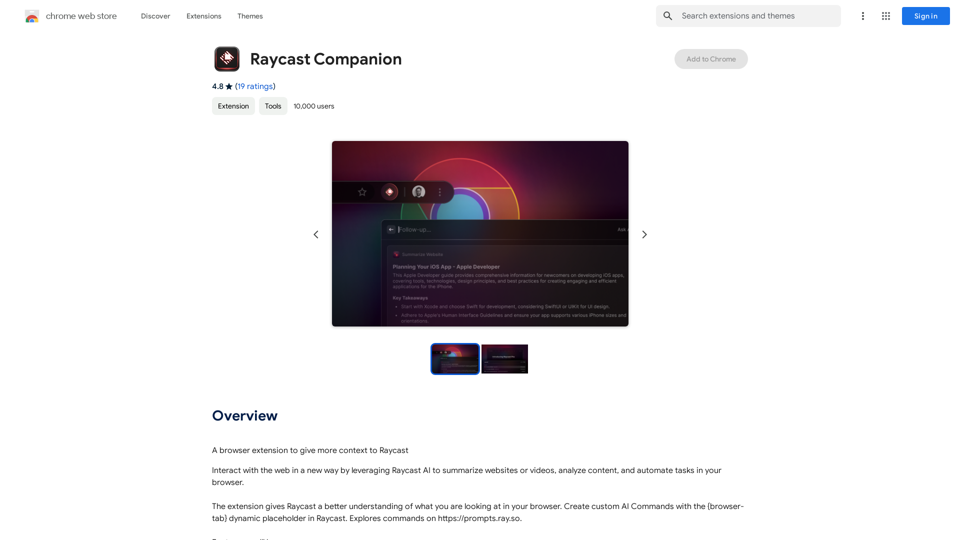
Introduction
Feature
Summarize Focused Tab
Quickly summarize the content of your active browser tab using the built-in "Summarize Website" command.
Custom AI Commands
Create personalized AI commands that interpret and process the content of your focused browser tab.
Community Inspiration
Get inspired by the Raycast community and share your own custom commands, fostering a collaborative environment for users.
Free GPT-4o Usage
Users can access GPT-4o for free up to 20 times per day, making advanced AI capabilities accessible to all.
Browser Integration
Seamlessly integrates with your browser, providing Raycast with a better understanding of your current web content.
Dynamic Placeholder
Utilize the {browser-tab} dynamic placeholder in Raycast to create versatile and context-aware AI commands.
Privacy-Focused
Raycast Companion prioritizes user privacy, ensuring that personal data is not used for training purposes.
FAQ
What is Raycast Companion?
Raycast Companion is a browser extension that enhances Raycast AI's capabilities by providing context from your browser. It enables users to summarize websites, analyze content, and automate tasks directly from their browser.
How can I use Raycast Companion?
To use Raycast Companion, create custom AI commands with the {browser-tab} dynamic placeholder in Raycast. You can explore command examples at https://prompts.ray.so.
Is Raycast Companion free to use?
Yes, Raycast Companion is a free extension. Users can utilize GPT-4o for free up to 20 times a day.
Will my information be used for training data?
No, Raycast highly values user privacy. Your data will not be used for any training purposes. You can delete your account at any time, and all your data will be removed.
When would I need a Raycast subscription?
If the 20 free GPT-4o conversations per day do not meet your needs and you heavily rely on GPT-4o, you may consider subscribing to Raycast's affordable products.
Latest Traffic Insights
Monthly Visits
193.90 M
Bounce Rate
56.27%
Pages Per Visit
2.71
Time on Site(s)
115.91
Global Rank
-
Country Rank
-
Recent Visits
Traffic Sources
- Social Media:0.48%
- Paid Referrals:0.55%
- Email:0.15%
- Referrals:12.81%
- Search Engines:16.21%
- Direct:69.81%
Related Websites
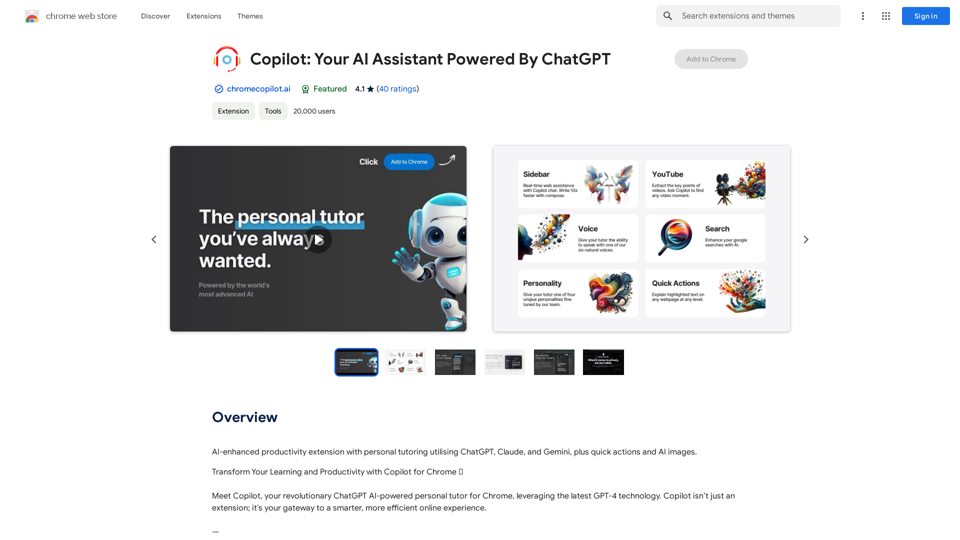
AI-powered productivity extension with personalized coaching using ChatGPT, Claude, and Gemini, plus rapid actions and AI-generated images.
193.90 M
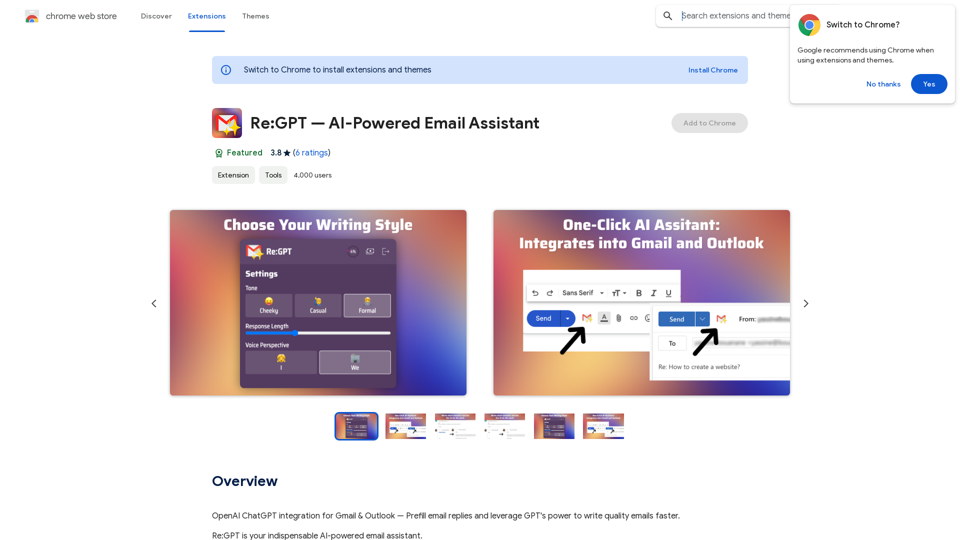
OpenAI ChatGPT integration for Gmail & Outlook — Automatically fill in email replies and harness the power of GPT to compose high-quality emails at a faster pace.
193.90 M
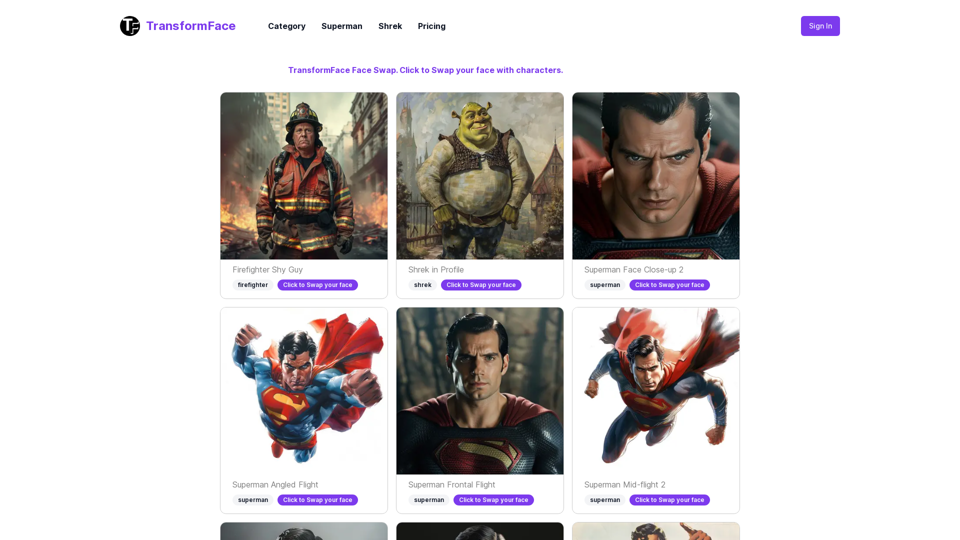
TransformFace Swap with AI. Click to add your photo/face. or in a more natural English tone: Transform Your Face Swap with AI. Click to Upload Your Photo!
TransformFace Swap with AI. Click to add your photo/face. or in a more natural English tone: Transform Your Face Swap with AI. Click to Upload Your Photo!Upload your face or photo and swap faces with TransformFace. Free Download Image. TransformFace
0
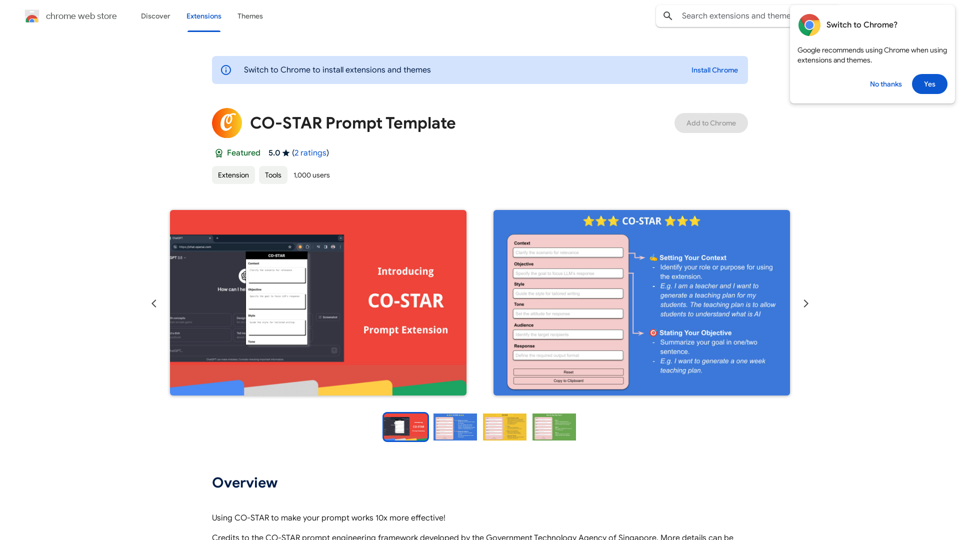
CO-STAR Prompt Template ========================== Task Description Describe the task you want the AI to perform. Be specific and concise. Input Prompt Provide the input prompt that the AI will receive. This can be a question, a statement, or a scenario. Desired Response Describe the desired response from the AI. What type of answer or output are you expecting? Constraints List any constraints or rules that the AI should follow when generating a response. This can include tone, style, or specific keywords to include or avoid. Evaluation Metrics Describe how you will evaluate the AI's response. What metrics or criteria will you use to determine the quality of the response? Example Output Provide an example of what a good response from the AI might look like. This can help clarify the task and provide a target for the AI to aim for.
CO-STAR Prompt Template ========================== Task Description Describe the task you want the AI to perform. Be specific and concise. Input Prompt Provide the input prompt that the AI will receive. This can be a question, a statement, or a scenario. Desired Response Describe the desired response from the AI. What type of answer or output are you expecting? Constraints List any constraints or rules that the AI should follow when generating a response. This can include tone, style, or specific keywords to include or avoid. Evaluation Metrics Describe how you will evaluate the AI's response. What metrics or criteria will you use to determine the quality of the response? Example Output Provide an example of what a good response from the AI might look like. This can help clarify the task and provide a target for the AI to aim for.Using CO-STAR to Make Your Prompt 10 Times More Effective!
193.90 M
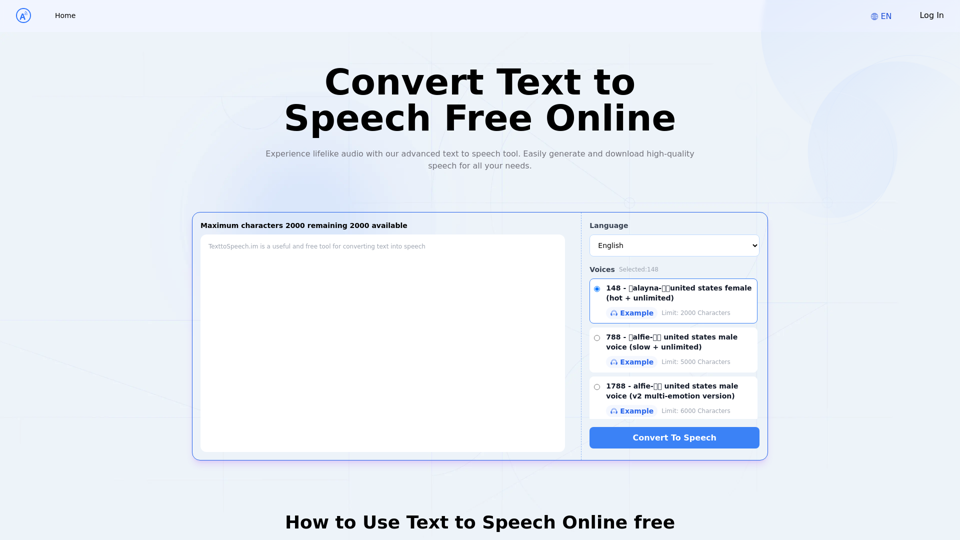
Text to Speech.im: Convert Text to Speech for Free Online
Text to Speech.im: Convert Text to Speech for Free OnlineConvert text to speech effortlessly using our AI text to speech online free tool. Enjoy natural-sounding text to speech voices and seamless text to speech download for high-quality audio. Perfect for creating engaging content with our text to speech generator.
12.76 K
